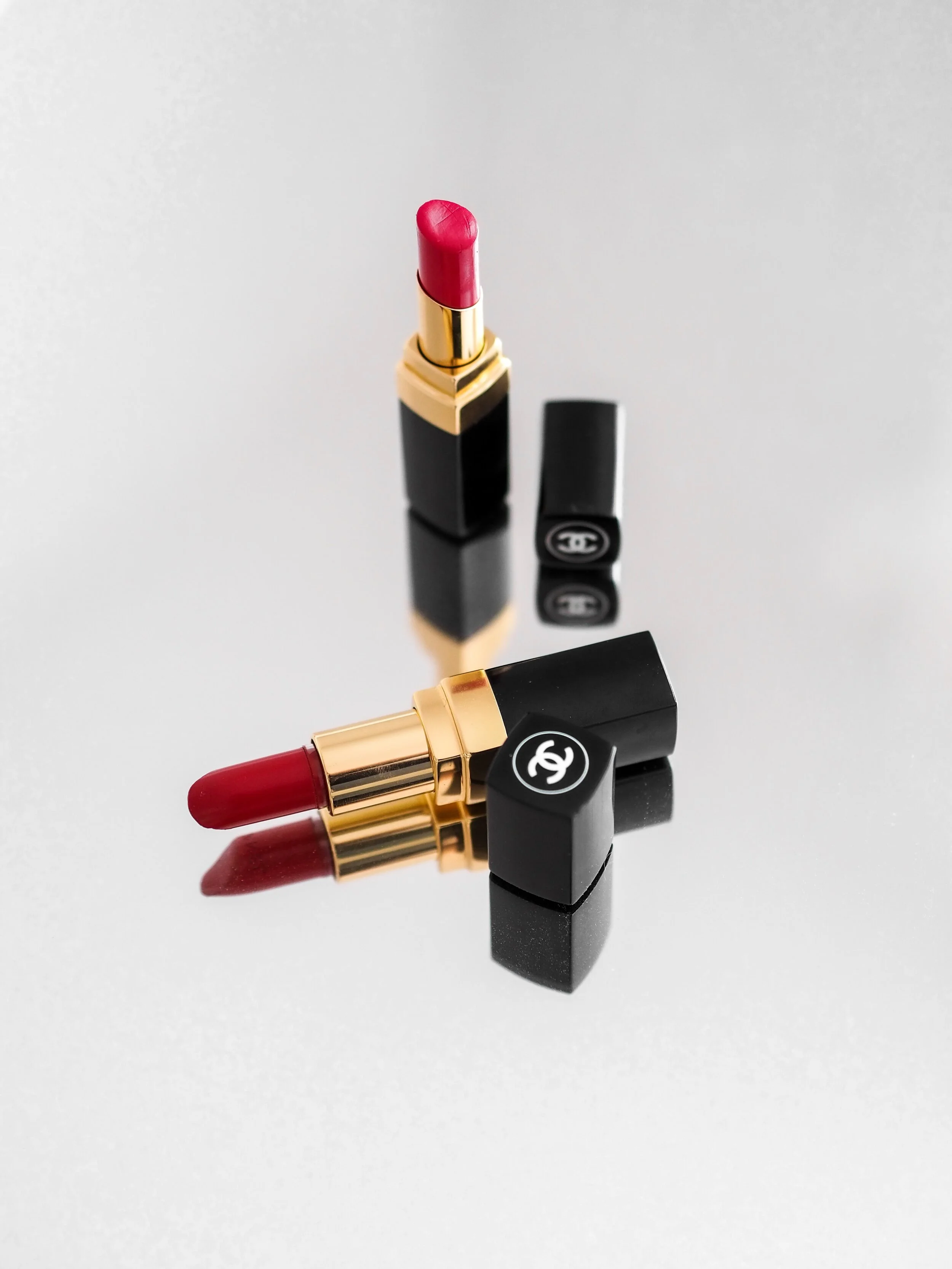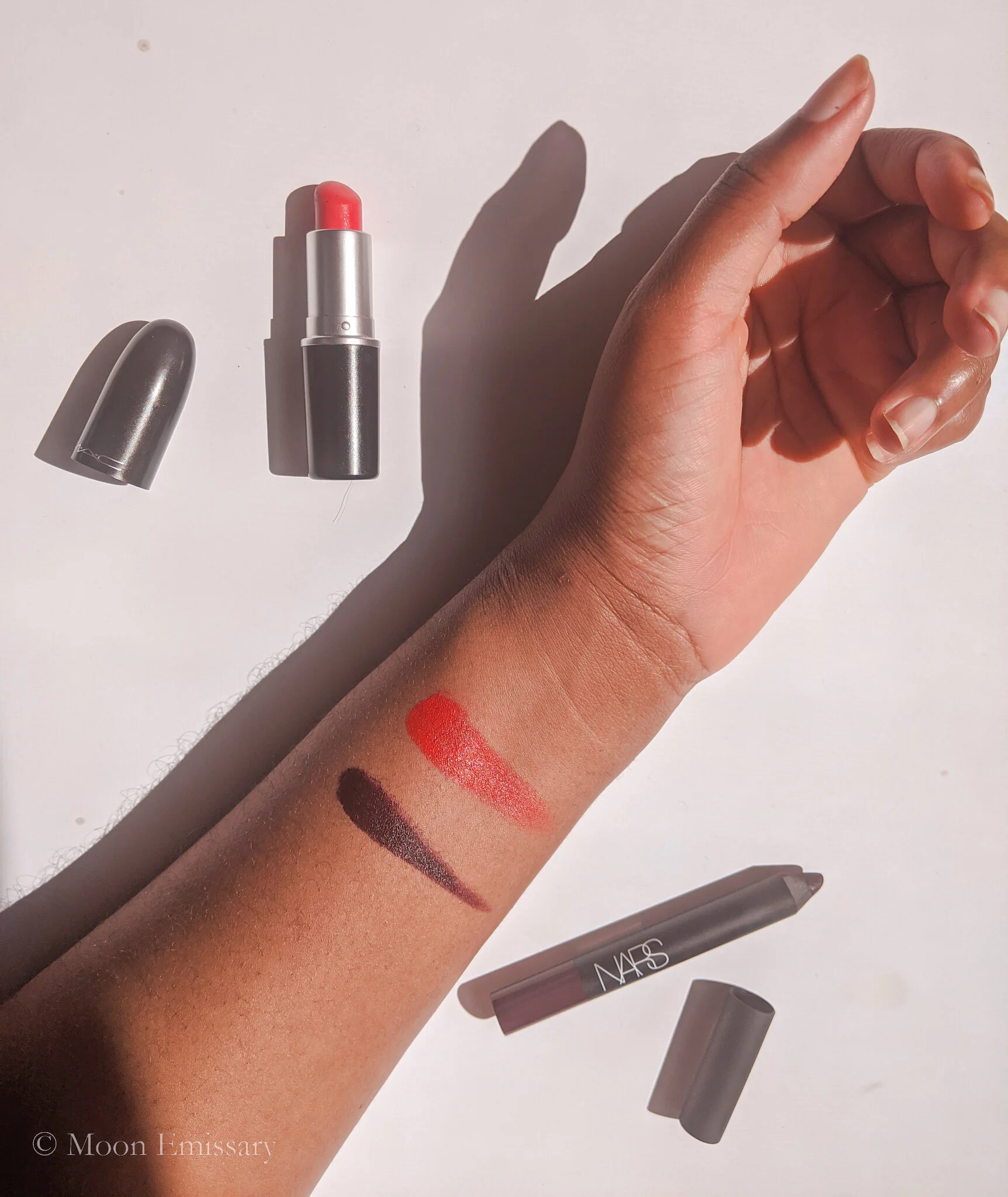How to Use Color Theory to Build a Lipstick Wardrobe
There’s a reason why lipstick is the last item I apply before stepping out the door.
Because as the most joy-filled item in my minimalist makeup collection, a swipe of bold, beautiful lipstick is all I need to take my look from 0 to 100, without breaking the bank.
If you’re someone who longs for a cost-effective way to add instant chic to your personal aesthetic, all you need to do is follow in my footsteps, by building a lipstick wardrobe.
Read on for my top tips on how to successfully apply color theory to your makeup and a bit of inspiration.
1. Mind the Color Wheel
The first step to building a lipstick wardrobe begins in your head; instead of approaching lipstick like just another makeup product, approach it like you would an oil paint color. Like strokes in a master’s composition, the right hue can make or break your look.
To understand why, you must examine color theory (or colour theory, if you use real English), or the collection of rules and guidelines makeup artists use to formulate eye-catching color schemes. Chances are you’re already familiar with primary colors – red, blue, and yellow – which are the source of all other shades in the color wheel. And chances are you already understand how primary colors mix to form secondary colors – green, orange, and purple.
Complementary colors, however, are where things get tricky.
They’re also the secret to effectively pairing lip color with clothing.
To simplify, complementary colors are opposite from each other on the color wheel. And despite being oppositional, complementary colors pop when paired together, through a natural illusion called simultaneous contrast.
An artsy example of the color wheel. Note how complementary colors are opposite from each other. Photo by Annie Spratt on Unsplash
When applied to fashion and makeup artistry, complementary colors mean creating contrast with the shade families in your clothing and lipstick. For example, effective fashion and makeup color theory might look like this:
A navy-blue dress with bright orange lips.
An emerald green blazer with fuchsia, coral, or crimson lips.
A marigold blouse with plum or cranberry lips.
Put it in Neutral
Neutral clothing colors, such as white, black, khaki, and brown, work well with every lipstick color. When wearing neutrals, experiment with opposing hues, such as light neutral clothes with dark lipsticks, or dark neutral clothing with bright lipsticks.
2. Factor in Your Skin Tone
Your skin tone also matters; pick the wrong lip shade and you’ll wind up with a dulled complexion…or worse…corpse lips.
Like the color wheel, skin undertones run from cool, to warm, to neutral, which is a mixture of warm and cool. To figure out your skin tone, simply look at your veins. Do they look blue? You’re cool-toned. Do your veins look green? You’re warm-toned. Do your veins look green and blue? You’re neutral.
Once you’ve identified your undertone, use it to narrow down your lipstick shade matches:
Cool undertones. Look for lipsticks with blue and purple undertones, such as plum, cherry red, mauve, purple, and crimson.
Warm undertones. Look for lipsticks with orange, yellow, golden, or peach undertones, such as coral, terracotta, scarlet, burgundy, and sienna.
Neutral undertones. Every lip shade under the sun; seriously, neutral undertones can rock any lip color.
3. Play
Sample and experiment with many lip shades before arriving at a purchasing decision. Photo by Alicia Michelle
Just as you’d try on different clothes before making a purchase, you should sample and experiment with many lip shades before arriving at a decision. Though this means delayed gratification, calculated purchases help you find your perfect lipstick match and prevent you from hemorrhaging money before you find it.
When weighing your options, consider the following:
Your budget. How much are you willing or able to spend?
Your clothing. What colors do you usually wear? How would you describe your aesthetic?
Your lifestyle. What does your everyday life include? Be realistic.
Product performance. Is long-wear important to you? How about comfort? Your performance preferences will impact coverage, finish, and wear-time.
Product compatibility. Are you predisposed to dry or chapped lips? Do you have sensitive, highly reactive skin?
4. Experiment with Different Finishes
Once you’ve discovered your ideal colors and product formulation, it’s time to consider finishes.
Like casual and formal clothing, a selection of sheer and opaque, matte and reflective finishes allows you to dress your look up and down.
For a lipstick wardrobe, this means having at least one of each desired finish:
Opaque reflective finishes. Such as glosses, satins, and vinylic lips.
Sheer reflective finishes. Such as tinted lip balms.
Opaque and sheer mattes. Such as liquid lipsticks and bullets with velvet, soft, sheer, or flat matte finishes.
Double Trouble
Opaque matte bullets can turn into sheer mattes with the blot of a finger or a tissue.
5. Branch Out
Variety is the spice of a good lipstick wardrobe, but if you’re new to working with color and texture, it’s easy to get stuck in a familiar rut.
If you find yourself gravitating to the same colors, remind yourself to branch out, and do so by exploring adjacent shades. Pinky nudes, for example, can easily transition to raspberry or fuchsia with a bit of nudging.
A Peek Inside My Lipstick Collection
Casual Color
Rituel de Fille’s Bloodroot (top) and Clinique’s Fuller Fig (bottom) swatched on dark skin. Photo by Alicia Michelle
Rituel de Fille is an indie beauty brand that specializes in natural, spellbinding color. Their products ooze big witch energy, and Bloodroot, a sheer, mesmerizing blood orange created with the pigment of the achiote tree, is unlike any lip color I’ve ever seen and is absolutely stunning on olive skin tones. Though this shade comes in a stiffer formula than I’m used to, Bloodroot shifts from translucent amber to phosphorescent tangerine when warmed and layered.
Like many makeup lovers, my intro to beauty began with Clinique. Also like many makeup lovers, I’ve since branched out to other brands, only to return to Clinique for reliable, low-maintenance standbys. Fuller Fig, a sheer, lightly hydrating, brown-toned cranberry, is a workhorse in my lipstick wardrobe, perfect for throwing on before Zoom calls or touchups on-the-go.
The White T-Shirt
MAC’s Chili swatched on warm-toned dark skin. Photo by Alicia Michelle
Sometimes I crave a red lip, but have nowhere to wear a red lip to. Enter MAC’s Chili, a warm, mid-toned terracotta with a matte finish. Compared to other lipsticks in MAC’s iconic shade range, Chili is easily one of the creamiest and most comfortable; it sheers out effortlessly for casual daytime wear and is guaranteed to garner compliments from everyone you come across.
The Showstoppers
MAC’s Lady Danger (top) and NARS’ Train Bleu (bottom) swatched on deep skin. Photo by Alicia Michelle
Another iconic shade from MAC, one that’s reappeared in my lipstick collection after a long absence. Vivid and intensely pigmented, Lady Danger is a matte orangey red that’s practically made for balmy summer nights and dusky skin. Since this shade is so saturated, I like to let her do all the talking, by pairing her with a wash of copper eyeshadow and a kiss of dewy cream bronzer.
NARS’ Train Bleu was on my wish list for years before I took the plunge, and my only regret is not purchasing it sooner. Moody and luxuriant, Train Bleu is a deep aubergine that delivers full velvet matte coverage in one swipe. When paired with a lacy black dress and coiffed hair, this shade also hits all the right fantasy notes, by transforming you into a film noir starlet.
What’s your favorite complementary color pairing?






